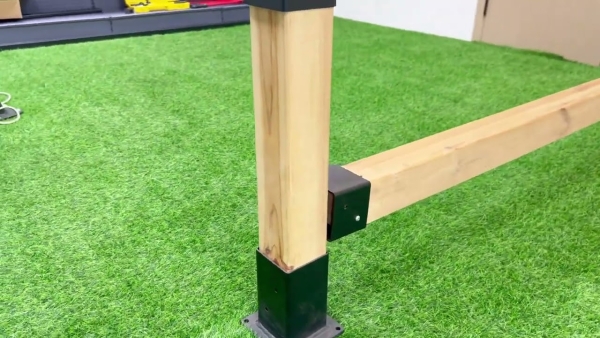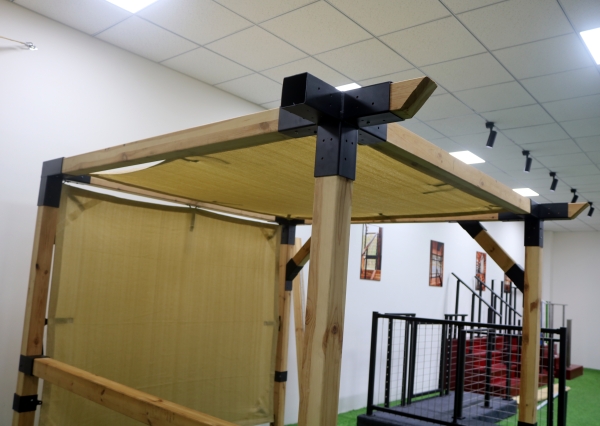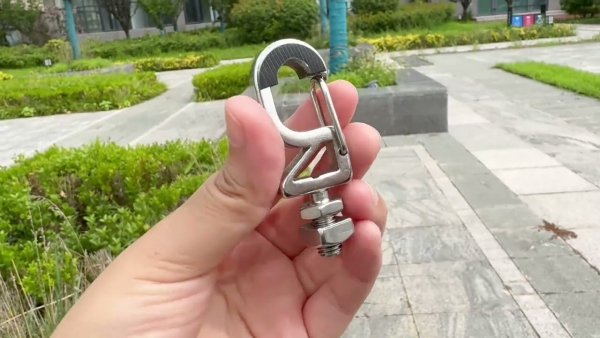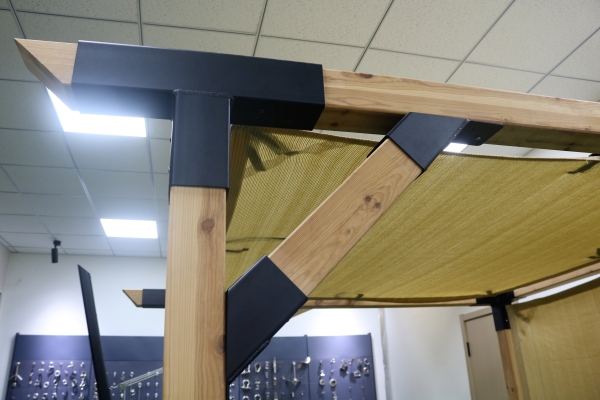Table of Contents
فوائد استخدام الفولاذ المقاوم للصدأ في أجهزة المطبخ
بالإضافة إلى بنيته الدقيقة، يمكن أيضًا أن تتأثر صلابة الفولاذ المقاوم للصدأ بالمعالجة الحرارية. تتضمن المعالجة الحرارية تسخين الفولاذ المقاوم للصدأ إلى درجة حرارة معينة ثم تبريده بمعدل متحكم فيه لتغيير بنيته الدقيقة وخصائصه. من خلال التحكم الدقيق في عملية المعالجة الحرارية، يمكن للمصنعين تحقيق الصلابة المطلوبة والخصائص الميكانيكية الأخرى في الفولاذ المقاوم للصدأ.
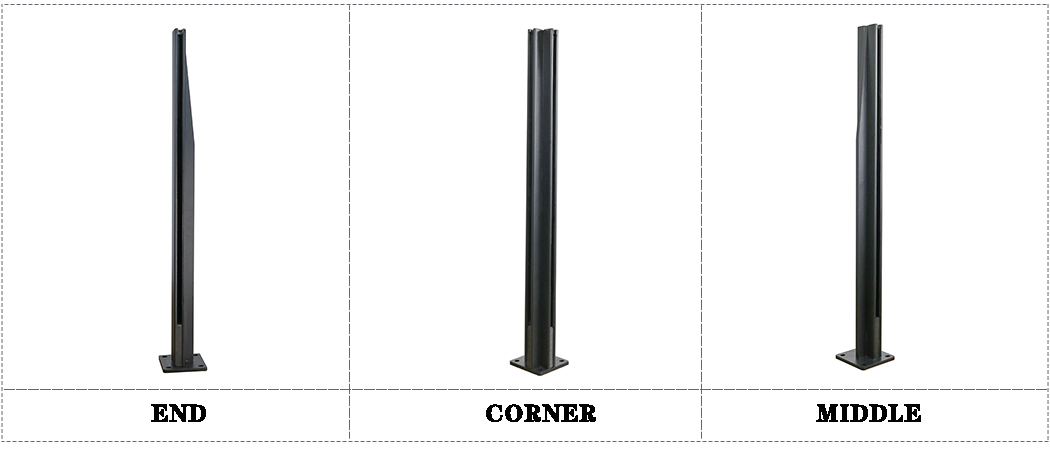
نصائح للحفاظ على أواني الطبخ المصنوعة من الفولاذ المقاوم للصدأ
الفولاذ المقاوم للصدأ هو مادة شائعة الاستخدام في أواني الطهي نظرًا لمتانته ومقاومته للتآكل ومظهره الأنيق. ومع ذلك، يتساءل الكثير من الناس عن مدى صلابة الفولاذ المقاوم للصدأ. من أجل فهم صلابة الفولاذ المقاوم للصدأ، من المهم أن نفهم أولاً ما تعنيه الصلابة في سياق المواد.
الصلابة هي مقياس لمقاومة المادة للتشوه، أو قدرتها على تحمل القوى دون تغيير شكلها بشكل دائم. في حالة الفولاذ المقاوم للصدأ، يتم قياس الصلابة عادةً باستخدام مقياس صلابة روكويل. يعين هذا المقياس قيمة رقمية لصلابة المادة بناءً على عمق اختراق مسافة بادئة موحدة تحت حمل معين.
يشتهر الفولاذ المقاوم للصدأ بصلابته العالية، مما يجعله مقاومًا للخدوش والانبعاجات. يتم تحقيق هذه الصلابة من خلال عملية تعرف باسم تصلب العمل، حيث تتعرض المادة لضغط ميكانيكي يسبب خلوعًا في البنية البلورية للمعدن. تؤدي هذه الاضطرابات إلى زيادة صعوبة تشوه المادة، مما يزيد من صلابتها.
على الرغم من أن الفولاذ المقاوم للصدأ مادة صلبة بالفعل، إلا أنها ليست محصنة ضد التلف. لا تزال الأشياء الحادة أو الكاشطة قادرة على خدش أو خدش أواني الطهي المصنوعة من الفولاذ المقاوم للصدأ، خاصة إذا لم يتم الاعتناء بالمادة بشكل صحيح. للحفاظ على صلابة ومظهر أواني الطبخ المصنوعة من الفولاذ المقاوم للصدأ، من المهم اتباع بعض النصائح الأساسية.
أولاً وقبل كل شيء، من المهم تجنب استخدام الأواني المعدنية في أواني الطبخ المصنوعة من الفولاذ المقاوم للصدأ. يمكن للأدوات المعدنية أن تخدش سطح أواني الطهي، مما يؤثر على صلابتها ويحتمل أن يتسبب في تلفها. بدلاً من ذلك، اختر الأواني المصنوعة من الخشب أو السيليكون أو البلاستيك، والتي تقل احتمالية خدش سطح الفولاذ المقاوم للصدأ.
بالإضافة إلى تجنب الأواني المعدنية، من المهم أيضًا تنظيف أواني الطبخ المصنوعة من الفولاذ المقاوم للصدأ بشكل صحيح. يمكن أن تؤدي عوامل التنظيف القاسية، مثل مواد التبييض أو المنظفات الكاشطة، إلى إتلاف سطح أواني الطهي وتقليل صلابتها. بدلاً من ذلك، استخدمي صابون أطباق خفيف وماء دافئ لتنظيف أواني الطبخ المصنوعة من الفولاذ المقاوم للصدأ، وتجنب استخدام أدوات التنظيف الكاشطة التي يمكن أن تخدش السطح.
نصيحة أخرى مهمة للحفاظ على صلابة أواني الطهي المصنوعة من الفولاذ المقاوم للصدأ هي تجنب تعريضها لدرجات حرارة شديدة. يمكن أن تؤدي التغيرات السريعة في درجة الحرارة إلى تمدد المعدن وتقلصه، مما قد يؤدي إلى تشوهه أو تشققه. لمنع ذلك، اترك أواني الطهي تبرد قبل تنظيفها بالماء البارد، وتجنب وضع أواني الطهي الساخنة مباشرة على سطح بارد.
باتباع هذه النصائح، يمكنك المساعدة في الحفاظ على صلابة ومظهر أواني الطبخ المصنوعة من الفولاذ المقاوم للصدأ لسنوات عديدة. يأتي. تذكري استخدام مواد تنظيف لطيفة، وتجنب الأدوات المعدنية، وانتبهي للتغيرات في درجات الحرارة للحفاظ على مظهر أواني الطهي الخاصة بك وتقديم أفضل أداء لها. مع العناية المناسبة، يمكن أن تظل أواني الطبخ المصنوعة من الفولاذ المقاوم للصدأ خيارًا متينًا وموثوقًا لمطبخك.
Tips for Maintaining Stainless Steel Cookware
Stainless steel is a popular material used in cookware due to its durability, resistance to corrosion, and sleek appearance. However, many people wonder just how hard stainless steel really is. In order to understand the hardness of stainless steel, it is important to first understand what hardness means in the context of materials.
Hardness is a measure of a material’s resistance to deformation, or its ability to withstand forces without permanently changing shape. In the case of stainless steel, hardness is typically measured using the Rockwell hardness scale. This scale assigns a numerical value to the hardness of a material based on the depth of penetration of a standardized indenter under a specific load.
Stainless steel is known for its high hardness, which makes it resistant to scratches and dents. This hardness is achieved through a process known as work hardening, in which the material is subjected to mechanical stress that causes dislocations in the crystal structure of the metal. These dislocations make it more difficult for the material to deform, increasing its hardness.
While stainless steel is indeed a hard material, it is not immune to damage. Sharp or abrasive objects can still scratch or dent stainless steel cookware, especially if the material is not properly cared for. To maintain the hardness and appearance of stainless steel cookware, it is important to follow a few key tips.
First and foremost, it is important to avoid using metal utensils on stainless steel cookware. Metal utensils can scratch the surface of the cookware, compromising its hardness and potentially causing damage. Instead, opt for utensils made of wood, silicone, or plastic, which are less likely to scratch the surface of the stainless steel.
In addition to avoiding metal utensils, it is also important to clean stainless steel cookware properly. Harsh cleaning agents, such as bleach or abrasive cleaners, can damage the surface of the cookware and reduce its hardness. Instead, use mild dish soap and warm water to clean stainless steel cookware, and avoid using abrasive scrubbers that can scratch the surface.
Another important tip for maintaining the hardness of stainless steel cookware is to avoid exposing it to extreme temperatures. Rapid changes in temperature can cause the metal to expand and contract, potentially leading to warping or cracking. To prevent this, allow the cookware to cool before cleaning it with cold water, and avoid placing hot cookware directly on a cold surface.
By following these tips, you can help maintain the hardness and appearance of your stainless steel cookware for years to come. Remember to use gentle cleaning agents, avoid metal utensils, and be mindful of temperature changes to keep your cookware looking and performing its best. With proper care, stainless steel cookware can remain a durable and reliable option for your kitchen.

